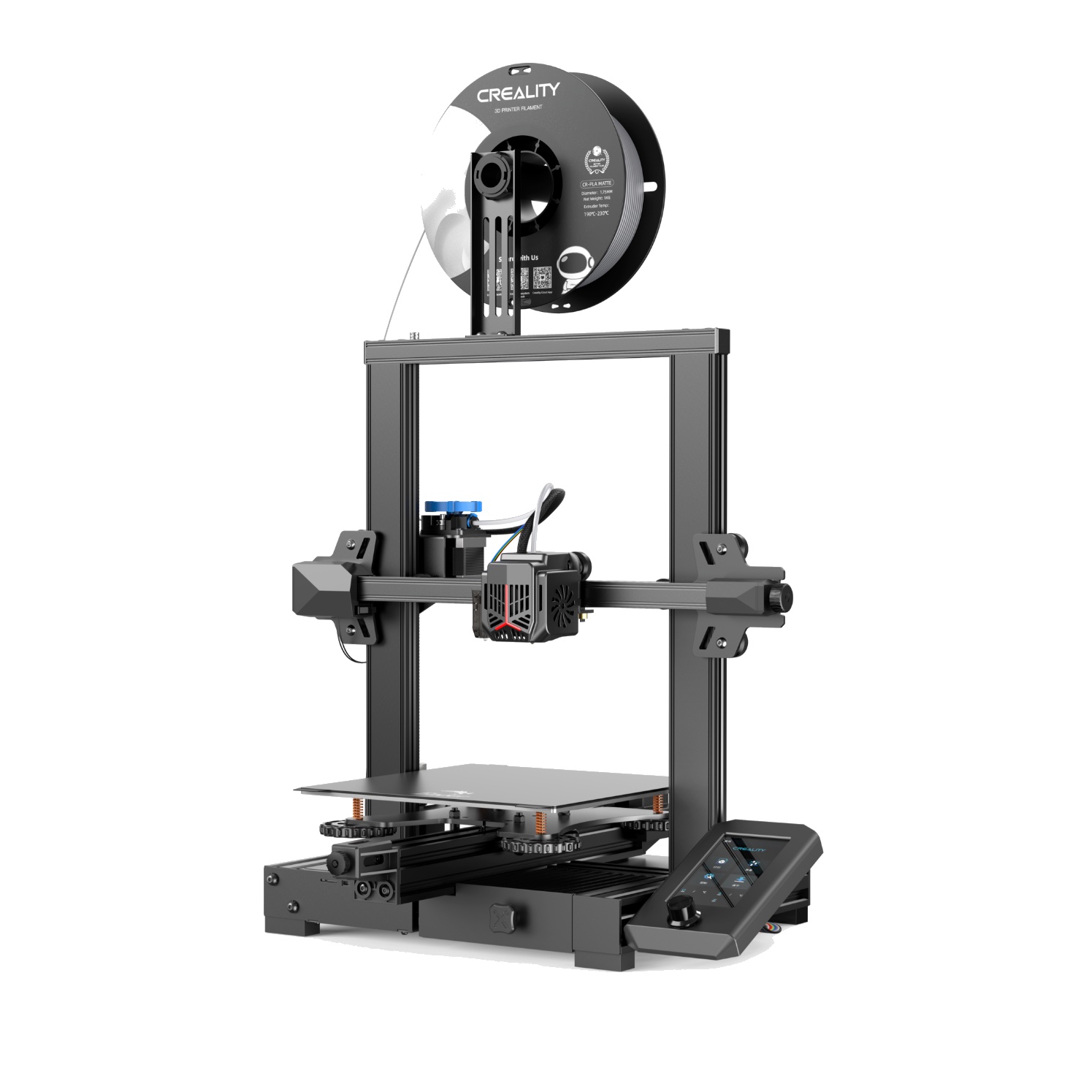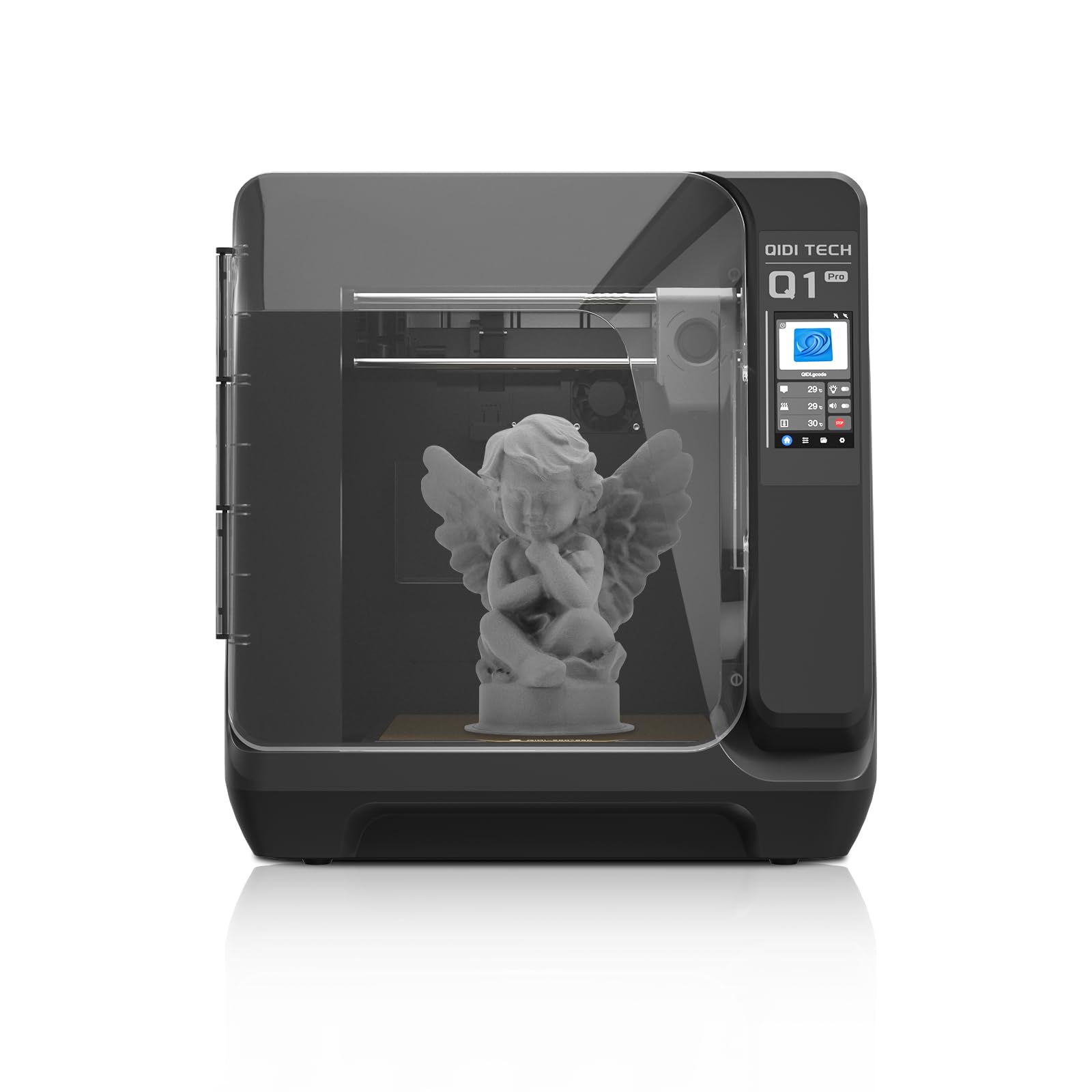Compare Ender 3 V2 Neo vs Q1 PRO
Comparison between the best 3D printers
Choose the best 3D printer at the best price. The cheapest 3D printers are here.
Buy a 3D printer here with 3D Fila.
 |
 |
|
| Model | Ender 3 V2 Neo[BUY Ender 3 V2 Neo] |
Q1 PRO[BUY Q1 PRO] |
| Printing Material | Filament | Filament |
| Buy Filament for Creality 3D Ender 3 V2 Neo | Buy Filament forQIDI Q1 PRO | |
| Estimated price | $310,00 | $449,00 |
| Manufacturer | Creality 3D | QIDI |
| Release Year | 2022 | 2024 |
| Print Volume [mm] | 220x220x250 | 245x245x245 |
| Printer Size [mm] | 438x424x472 | 467x477x489 |
| Weight [kg] | 9,8 | 20 |
| Power Loss Recovery | YES | YES |
| Enclosed printer | NO | YES |
| Bed Leveling | Automatic | Automatic |
| Filament End Sensor | YES | YES |
| Bed type | Heated | Heated |
| Power supply system | Bowden | Direct Drive |
| Standard nozzle | 0,4 | 0,4 |
| Maximum Nozzle Temperature [°C] | 260 | 350 |
| Maximum Bed Temperature [°C] | 100 | 120 |
| Maximum printing speed [mm/s] | 80 | 600 |
| Filament holder | YES | YES |
| Camera for supervision | NO | NO |
| Recommended filaments | PLA, PETG | PLA、ABS、ASA、PETG、TPU、PC、PA、PA-CF、PET-CF、PAHT-CF etc. |
| Recommended slicers | Cura, Simplify, Slic3r, IdeaMaker | QIDI Slicer/Cura/Simplify 3D/ORCA/PRUSA Slicer |
| Maximum Resolution [mm] | 0,1 | 0,1 |
| Processor | 4.2.2 mainboard | Cortex-A53,64-bit Processor |
| Display | Display touchscreen 4,3'' | Touchscreen 4,3'' |
| Power Supply | 350 W | |
| Connectivity | SD / USB | WiFi/USB Flash Drive/Ethernet Cable |
| Operating systems | Windows, Mac, Linux | Windows, Linux, Macbook |
| Date of registration in the system | 2022-12-09 | 2024-07-09 |
| Release date | 2022 | 2024 |
| Extra features | The Ender 3 V2 Neo printer stands out for its automatic bed leveling with the CR Touch system, ensuring high-quality initial layers. It features an all-metal Bowden extruder for increased durability and improved filament handling. Its flexible, PC-coated magnetic build plate makes it easy to remove prints and is durable and easy to clean. It also includes a new user interface with model preview and an updated gantry design. The Ender 3 V2 Neo maintains the same build volume and temperatures as the previous version, supporting popular filaments such as PLA and ABS. It features a quiet 32-bit mainboard and additional features such as a filament sensor, print recovery, simple 3-step assembly, an integrated toolbox, and belt tensioners. | The QIDI Q1 Pro 3D printer stands out for its Core XY structure and heating chambers that reach up to 60ºC, ideal for advanced materials such as ABS and Nylon. It features Klipper firmware, an automatic leveling system, a high-flow extruder with a double metal nozzle and a hotend that reaches 350ºC. It offers connectivity via Wi-Fi, USB and Ethernet, as well as a 1080p camera for remote monitoring and an intuitive touchscreen for easy operation. |
| Support for multiple colors and materials (AMS and CFS) | NO | NO |
Notes * |
||
| Cost-benefit | 6 / 10 | 8 / 10 |
| Hardware | 2.4 / 10 | 4.8 / 10 |
| Tela | . | . |
| Print volume | 3 / 10 | 3 / 10 |
| Performance | 0 / 10 | 5 / 10 |
| [BUY Ender 3 V2 Neo] | [BUY Q1 PRO] |
Conclusion |
| In comparing the Ender 3 V2 Neo and the QIDI Q1 Pro 3D printers, several important factors must be considered, including pricing, features, print quality, and overall value. The Ender 3 V2 Neo, priced more affordably, offers impressive capabilities for entry-level to intermediate users. Its features, such as automatic bed leveling, a heated build platform, and compatibility with common filaments like PLA and PETG, make it a solid choice for those looking to get into 3D printing without a substantial financial commitment. It is lightweight and compact, making it suitable for home or small workspace environments, while also providing essential functions like print recovery and a user-friendly touchscreen interface. On the other hand, the QIDI Q1 Pro, while more expensive, delivers superior performance and versatility, particularly for advanced users aiming to print with a wider range of materials—such as ABS, Nylon, and TPU—thanks to its higher maximum extruder temperature and enclosed structure. The printer’s advanced features, including a high-flow extruder, Core XY design, and multiple connectivity options (Wi-Fi, Ethernet), enhance its usability and efficiency for serious projects. Additionally, its larger print volume and faster maximum printing speeds provide a distinct advantage for more complex builds. While the Ender 3 V2 Neo excels in cost-effectiveness and straightforward usability, the QIDI Q1 Pro stands out in terms of performance and versatility, making it ideal for advanced printing needs. Ultimately, the choice between these two models will depend on the user’s specific requirements and budget. If one is focused on affordability and ease of use, the Ender 3 V2 Neo is the better option. Conversely, for those looking for more advanced features and greater material compatibility, the QIDI Q1 Pro offers enhanced capabilities that justify its higher price. |

